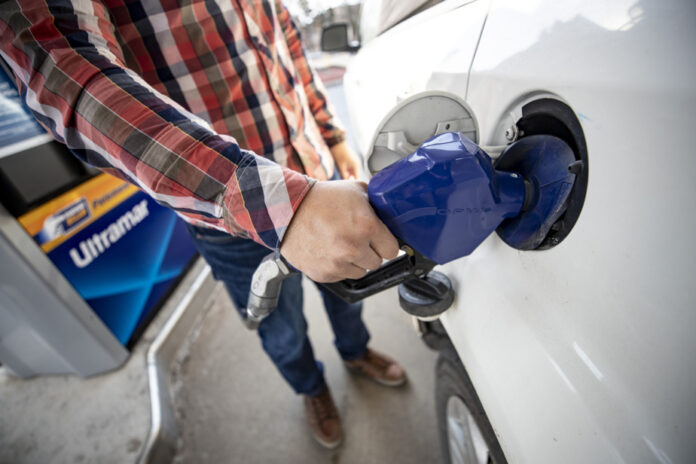(Calgary) Canadians hitting the road for the July 1 long weekend will find fueling up at the pump much less traumatic than this time last year.
The national average gasoline price hit an all-time high — topping $2.10 a liter — on June 12 last year, as fallout from Russia’s invasion of Ukraine disrupted markets energy worlds.
Prices had barely dropped as Canadians geared up for their Canada Day camping trip or cottage visit. On June 28, 2022, the national average gasoline price exceeded $2.05 per litre, according to data from Natural Resources Canada.
“Prices have declined since the first half of last year for a variety of reasons, including waning (but not disappearing) concerns about supply disruptions from the Russian invasion of Ukraine and slowing global economic growth,” ATB Financial wrote in a newsletter sent Wednesday.
The benchmark West Texas Intermediate (WTI) crude oil price per barrel is currently on track to average around US$70 for the month of June, which is close to where prices were a while ago. two years old, before the war in Ukraine.
The average WTI price for the first six months of 2023 is expected to be around US$75 per barrel, compared to over US$100 per barrel in the same period of 2022, ATB Financial wrote.
Current crude oil prices remain above the five-year average of around US$53 per barrel, but the year-over-year decline has brought some relief to Canadians.
According to TD Economics, lower fuel prices at the pump were the main factor behind the slowdown in annual consumer price inflation to 3.4% in May, its lowest level in the country in nearly two years.
But it’s unclear how long lower gasoline prices may last. Vijay Muralidharan, energy analyst and managing director of R Cube Consulting, said he expects prices to rise through the summer as refiners and suppliers begin to pass on costs related to the new federal standard. on clean fuels, which will come into force on July 1.
Although refiners have a full year to comply with the new rules, which aim to limit the carbon intensity of fuels sold in Canada, Muralidharan said he believes consumers will feel the effects sooner rather than later.
Companies can achieve this by blending a higher percentage of ethanol or biofuels into their gasoline, reducing emissions from their refinery through carbon capture and storage or other technology, or by purchasing carbon credits. other companies that have a lower emissions profile.
“It won’t be an easy task. And that cost will eventually be passed on to the consumer,” Mr. Muralidharan warned, adding that he believed the impact of the clean fuel standard would offset any price drops that may result from a potential slowdown in the economy. Mondial economy.
“I think there will be at least, at least (an increase this summer of) three to four cents per litre. Unless something catastrophic happens in the market, we will see an increase in gasoline and diesel prices. »
By the federal government’s own estimates, clean fuel standards regulations will drive gasoline prices up by a maximum of 17 cents per liter in 2030.















